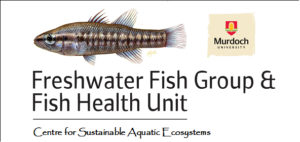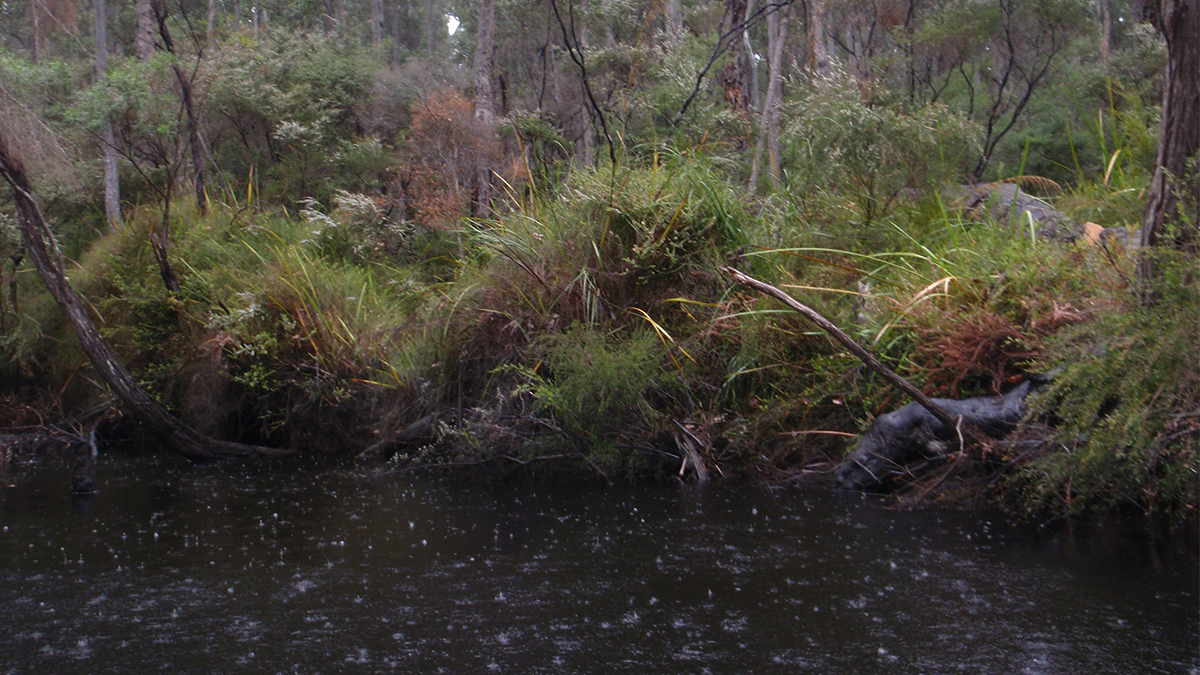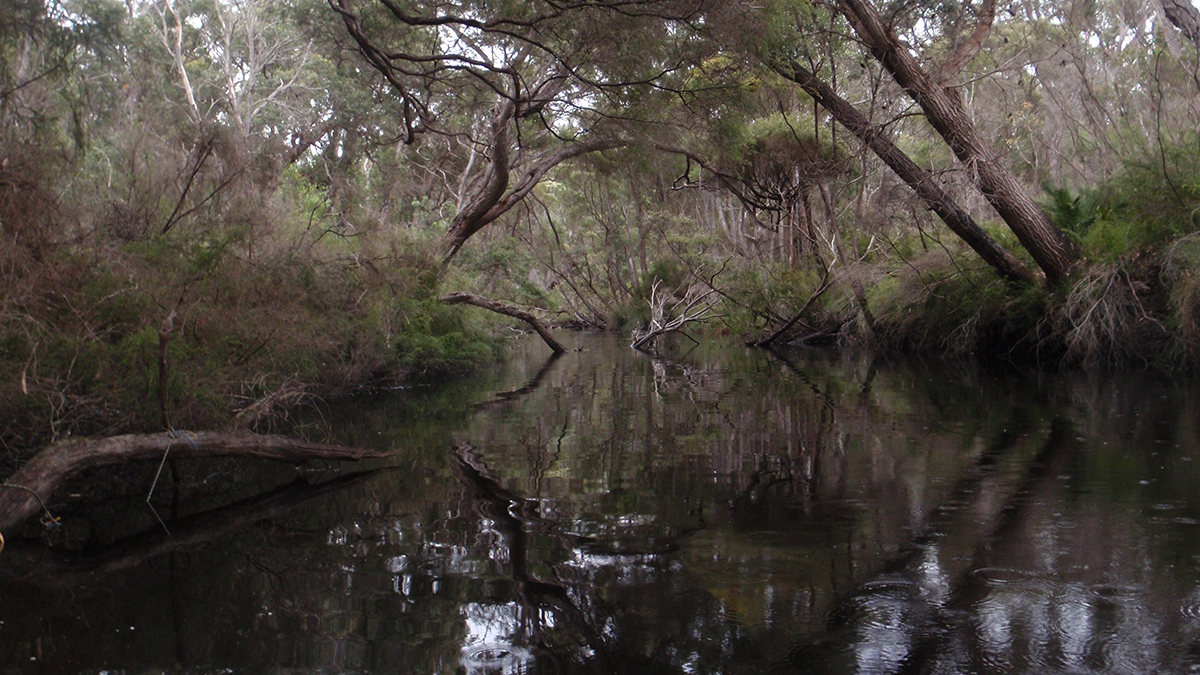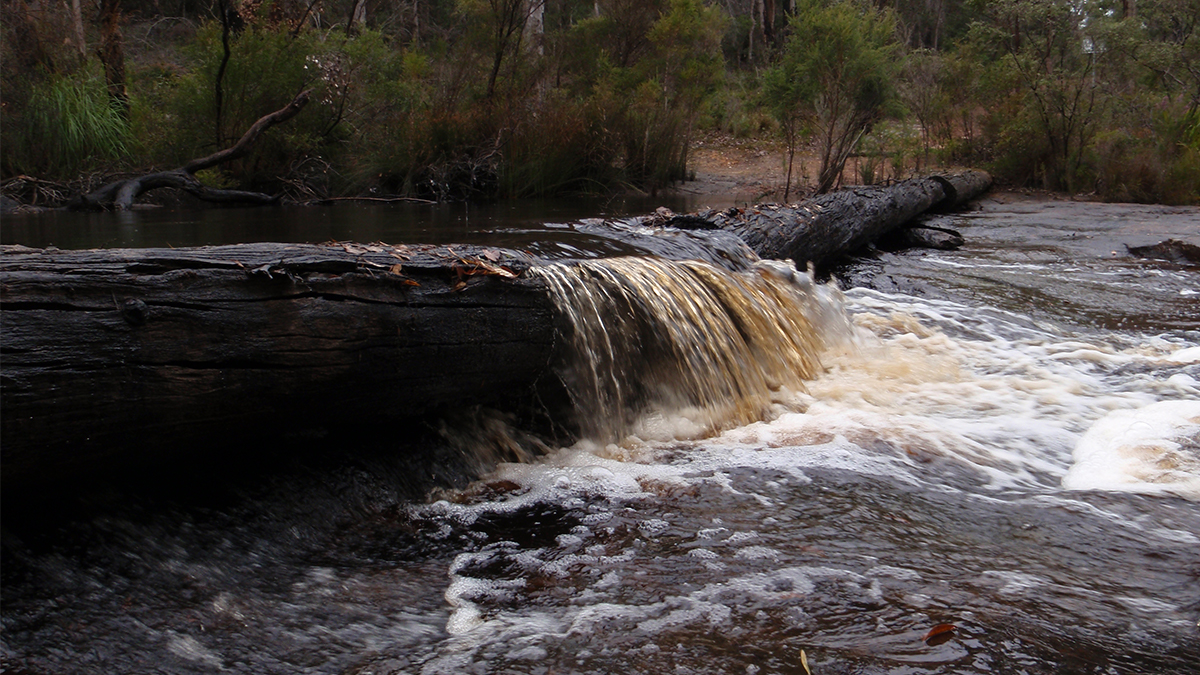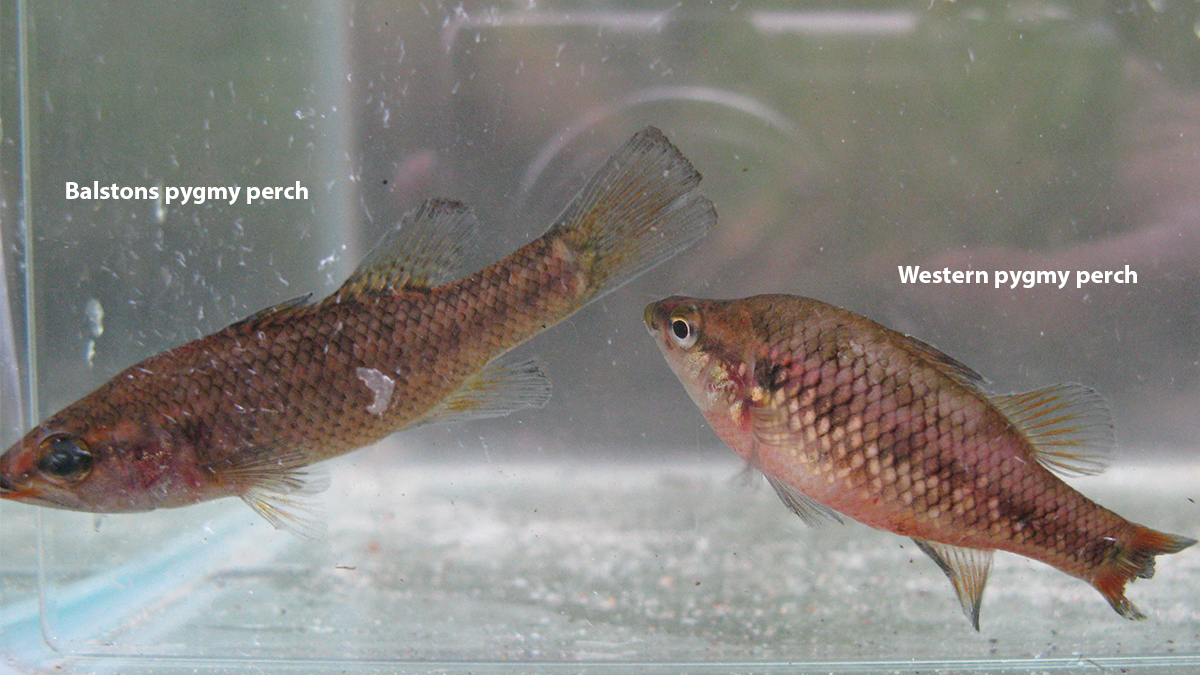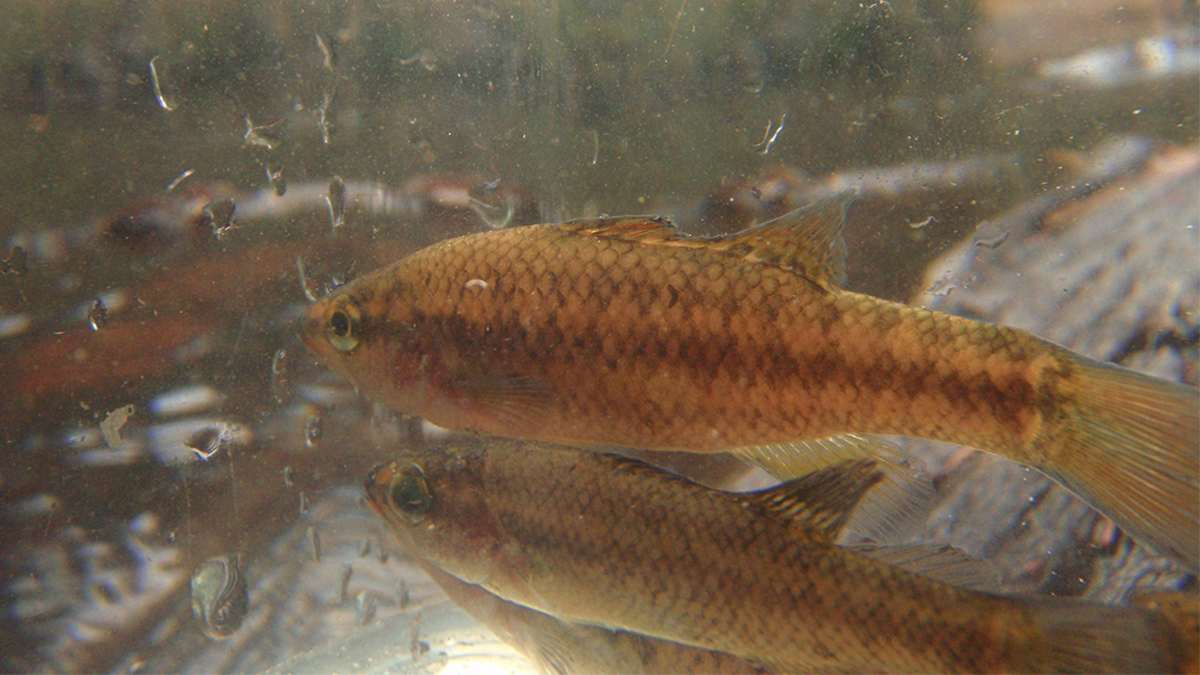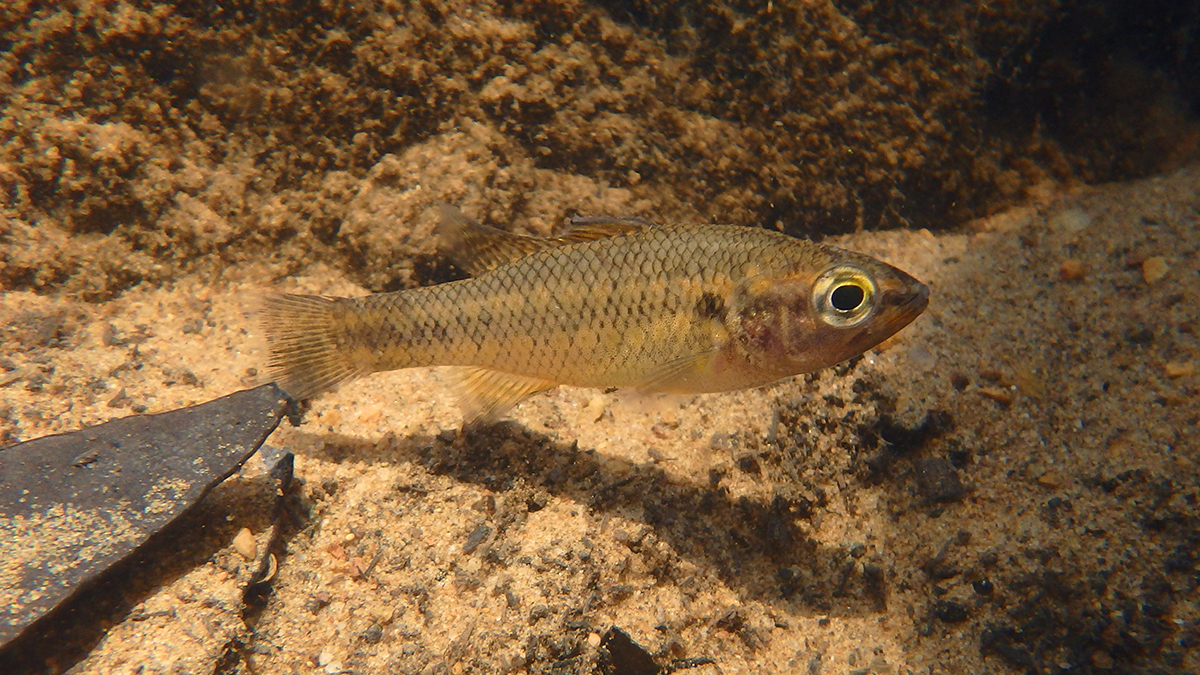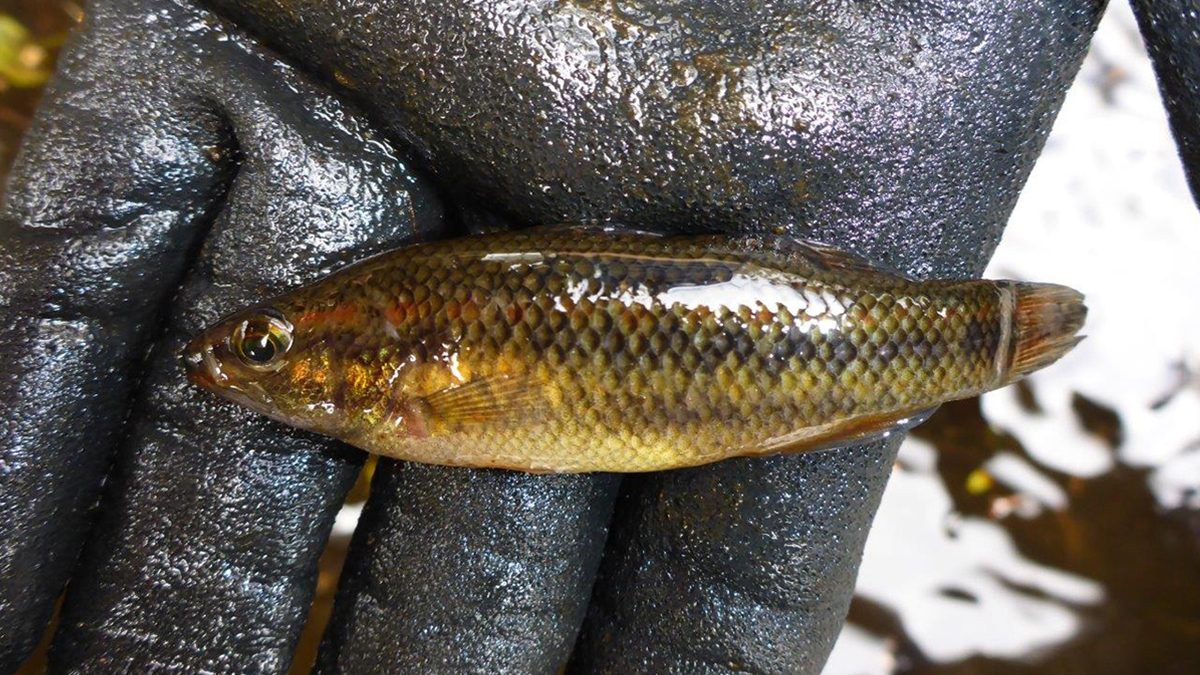Balston's pygmy perch - Nannatherina balstoni
This page was created in partnership with the Freshwater Fish Group and Fish Health Unit at Murdoch University
Identification
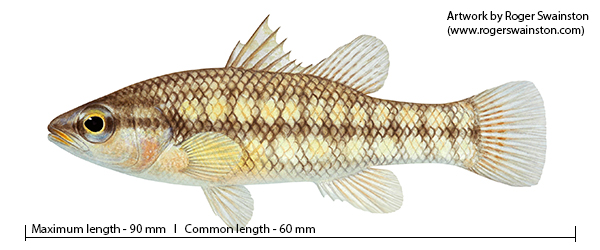
The largest of the three species of pygmy perch (see also western pygmy perch and little pygmy perch).
Has a distinctive diamond-shaped pattern running down its sides, with tan coloured diamonds over a brown background (or brown diamonds over a tan background depending on your point of view).
The species can be otherwise distinguished from other pygmy perches by a more elongate body, a large mouth extending and a relatively larger eye (in relation to head).
Distribution
Restricted to near-coastal streams, lakes and wetlands between upper Margaret River and the Goodga River (near Albany).
It is suggested that the original range probably included other systems through the Swan Coastal Plain, based on museum records from north of Perth (Gingin Brook). The absence north of Margaret River may be in response to habitat degradation, changes to water regimes (extraction and drying climate), secondary salinisation and competition with introduced fish.
Habitat
Associated with slow-flowing, low salinity, acidic and tannin-stained waters, and complex instream habitat.
Examples of typical habitat in the Weld River (south coast) are provided in the gallery.
Biology
Breeds from early winter to late winter/early spring. Many fish perishing after spawning at the end of their first year, however individuals are known to live over 3 years.
Terrestrial and aquatic insects form a major part of their diet.
Conservation status
Threatened species: Listed as vulnerable under the Biodiversity Conservation Act 2016 (state, Western Australia) and the Environment Protection and Biodiversity Conservation Act 1999 (Commonwealth). It is listed as endangered under the ICUN Redlist of Threatened Species 2019 (International).
Under the BC Act, Threatened species are listed in the category of critically endangered, endangered or vulnerable. Vulnerable species are considered to be “facing a high risk of extinction in the wild in the medium-term future, as determined in accordance with criteria set out in the ministerial guidelines”.
This is based on small distribution, and threats from habitat alteration and predation from exotic fish species.
Management
Refer to Conservation Advice from the listing under the EPBC Act 1999.
Further information
Contact the department’s River Science team, or the Murdoch Freshwater Fish Group via email: fish@murdoch.edu.au, or go to their website: www.freshwaterfishgroup.com
